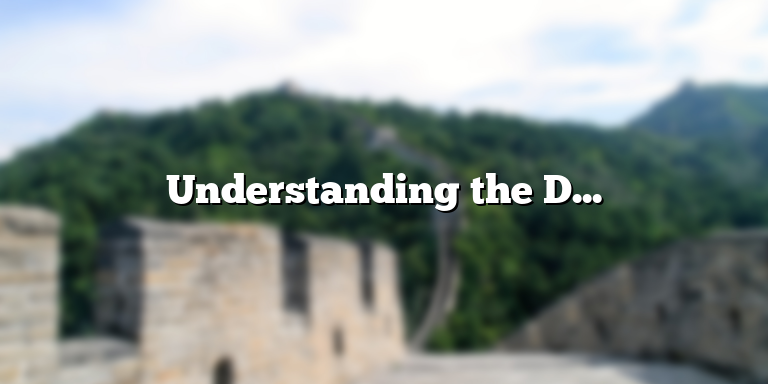
What is Media Bias?
Media bias refers to the deliberate or accidental inclination of media outlets to support, endorse, or highlight certain views or ideas while ignoring, censoring, or minimizing others. While media bias can take various forms, it generally involves a distortion of facts, sources, or perspectives in favor of a particular political ideology, economic interest, or social agenda.
Media bias, in a way, is inherent to the media industry. Each media outlet has its own history, ownership structure, political background, and editorial line, which inevitably shape the way news is produced, framed, and delivered. However, media bias can pose a threat to the quality, credibility, and fairness of journalism if it undermines the ability of the media to serve as a watchdog, a public forum, and a source of reliable information.
One of the most common forms of media bias is partisan bias, where media outlets tend to favor one political party or candidate over another. This can result in the overemphasis of positive stories or achievements of one party and the underrepresentation or negative portrayal of the opposite party. It can also lead to the use of inflammatory or sensationalized language, selective use of sources or data, and the exclusion of alternative viewpoints or perspectives.
Another type of bias is ideological bias, where media outlets promote a particular worldview, philosophy, or agenda. This can lead to the reinforcement of preexisting beliefs or opinions among the audience while limiting their exposure to diverse or dissenting views. Ideological bias can also create a hostile or divisive atmosphere in society, where opposing groups are labeled, discredited, or delegitimized based on their ideological positions.
Furthermore, cultural bias can affect the way media outlets portray certain groups or issues. This is particularly evident in the representation of minority or marginalized communities, where stereotypes, prejudices, or misrepresentations can have a negative impact on their image, identity, or status. Cultural bias can also influence the framing of social or environmental issues, where some problems are seen as natural, inevitable, or justified, while others are blamed, stigmatized, or ignored.
Finally, economic bias can shape the structure, content, and distribution of media outlets. This is evident in the concentration of media ownership, where a few companies control a significant share of media assets, limiting the diversity of perspectives and voices. Economic bias can also influence the choice of news topics or angles, where sensational or entertainment-oriented stories can attract more audiences and advertisers than serious or investigative news. Furthermore, economic bias can create conflicts of interest between the media and other actors, such as corporations, governments, or interest groups, where the media prioritize their economic gains over their journalistic principles.
Overall, media bias is a complex and multifaceted phenomenon that involves a range of factors, from the internal culture and structure of media outlets to the external pressures and constraints of the media environment. Understanding, detecting, and combating media bias require a critical and engaged audience, diverse and independent media, and ethical and professional standards for journalism.
Types of Media Bias
Media bias refers to the inclination of journalists or news media outlets to report certain news stories, opinions, or viewpoints in a subjective or one-sided manner. Here are the different types of media bias:
Political bias:
Political bias is when journalists or news media outlets report news stories with a particular political agenda or ideology. It often involves favoring one political party over another, or reporting news stories that align with a particular political belief. This type of media bias is prevalent during election seasons, where journalists tend to give more coverage to one candidate over the other.
Corporate bias:
Corporate bias is when news media outlets prioritize or give more coverage to news stories that align with their owners’ or sponsors’ interests. For example, a media outlet owned by a pharmaceutical company may be biased towards reporting news stories that promote the use of its products.
Sensationalism:
Sensationalism is when journalists or news media outlets report stories in a graphic, dramatic, or sensational manner that focuses more on attracting viewership or readership than on accurate reporting. This type of media bias is commonly seen in tabloids or news outlets that prioritize grabbing attention through shocking headlines and stories.
Gatekeeping bias:
Gatekeeping bias is when journalists or news media outlets exercise control over which news stories to publish or broadcast. In practice, it often means prioritizing news stories that will appeal to a particular audience, or that are likely to gain traction in the social media space. This can result in neglect of certain important stories, leading to an imbalance in news reporting.
Understanding the different types of media bias is crucial for every conscientious reader or viewer. It enables us to identify and question the news stories we consume, and to critically analyze the different elements that may contribute to media bias.
Political Bias
Political bias is a type of media bias where the media outlet or journalist has a particular political leaning that influences their news coverage or editorial opinion. It is the most common type of media bias and it can have a significant impact on shaping public opinion.
Political bias can manifest in various ways, such as:
- Slanting coverage: It involves covering news stories or events in a way that favors one political ideology or party over another. This can be done by selectively reporting certain facts and ignoring others, using loaded language, or framing the story in a way that suits the political agenda of the outlet or journalist.
- Cherry-picking sources: This involves using only sources that support a particular political agenda or narrative, while ignoring or discrediting sources that offer a different perspective or opinion.
- Editorial bias: This is when the editorial board or opinion writers of a media outlet express a clear political bias in their writing. This can influence the overall editorial tone of the outlet and shape public opinion in a particular way.
Political bias can occur in news reporting, analysis, and editorial content. It can be subtle or overt, intentional or unintentional. It can also be found in both mainstream and alternative media sources.
The impact of political bias can be far-reaching. It can influence people’s perception of political issues, sway public opinion in favor of or against a particular ideology or party, and even affect the outcome of elections.
It is important for journalists and media outlets to be aware of their political biases and strive for fairness and objectivity in their reporting. They should strive to present all sides of an issue, use diverse sources, and avoid using loaded language that can bias the reader or viewer.
As media consumers, it is important to be aware of the potential for political bias in the news and to seek out diverse sources and perspectives to form an informed opinion.
Corporate Bias
Corporate bias refers to the phenomenon where media organizations demonstrate favoritism towards corporate entities with whom they share financial interests. The bias may also arise when the media company’s owner has business ties with corporations, leading to biased reporting that favors their interests.
Corporate bias can be seen in various forms; for instance, a media company may highlight the positive side of a corporation and put a positive spin on negative news related to them. Alternatively, they may choose to ignore events that could cause damage to the reputation of the corporation, leading to insufficient coverage of the issue. The bias may also be reflected in the selection of news stories, where certain stories are excluded due to their perceived negative impact on the corporation or its interests.
Corporate bias can have far-reaching consequences for society. In many cases, corporations are associated with controversial practices, such as environmental degradation, human rights violations, or labor exploitation. If these issues are downplayed or neglected by media organizations, corporations can continue engaging in these practices without being held accountable for their actions. The public may also remain unaware of the risks associated with corporations, leading to poor decision-making when it comes to issues such as investment or political support.
In addition to affecting the coverage of issues related to corporations, corporate bias can also impact the media’s reporting related to government policy. If the corporation in question has close ties to the government or is lobbying for certain policies, the bias can lead to selective reporting that either supports or opposes those policies. This can negatively impact public trust in the media, as it leads to accusations of biased reporting and undermines the media’s role as an objective source of information.
It is important to note that not all media organizations are susceptible to corporate bias. However, the prevalence of corporate bias in media organizations highlights the need for greater transparency and accountability in media reporting. Media organizations should disclose any business ties with corporations and strive to maintain a neutral stance when reporting on issues related to them. Additionally, the public should always be vigilant and question the media’s reporting rather than blindly accepting the information presented to them.
Sensationalism Bias
Sensationalism bias is a type of media bias that is commonly seen in news stories. It occurs when media outlets use sensational headlines or stories to attract attention and increase their ratings or sales. It is a tactic that has been used by media organizations for many years, and it can have a significant impact on how people perceive certain issues or events.
One of the most common ways in which sensationalism bias is displayed is through the use of sensational headlines. News outlets know that people are more likely to click on stories with sensational headlines, so they use this to their advantage. They may exaggerate the facts or make the story seem more dramatic than it actually is, just to get more clicks.
Another way in which sensationalism bias is displayed is through the use of sensational stories. News outlets may choose to cover stories that are more sensational or dramatic, even if they are not the most important stories of the day. This can lead to a skewed perception of the news, as people are more likely to remember the sensational stories than the more mundane ones.
Sensationalism bias can have a significant impact on how people perceive events. If media outlets are exaggerating the facts or covering more sensational stories, people may become more fearful or anxious about certain issues. They may also become desensitized to certain events, as news outlets cover them repeatedly in a sensational way.
It is important to be aware of sensationalism bias and to look for more objective news sources. It is also important to be critical of the news and to question the information that is being presented. By being aware of sensationalism bias, we can better understand the news and make more informed decisions about the world around us.
Gatekeeping Bias
Media bias takes on different forms, and one of them is gatekeeping bias. This type of bias occurs when media organizations selectively decide which news stories or information they present to their audience. It’s a common practice in the media industry, but often goes unnoticed or unacknowledged.
Gatekeeping bias can occur for various reasons. Sometimes it’s due to the personal biases of individuals working in the media organizations, while other times it’s influenced by organizational preferences or political ideologies. Ultimately, it affects the quality of information that’s presented to the audience and can shape their perception of various issues.
For example, a media organization that has a strong political leaning towards a particular party may choose to highlight news stories or information that is favorable to that party. They could also go to the extent of ignoring or downplaying news stories or information that could potentially discredit the same political party.
Another example is when a media organization wants to keep a particular issue under wraps. They might selectively choose not to report on certain stories that could potentially bring attention to that issue. This can be particularly dangerous when it comes to public interest issues, such as environmental concerns or public health concerns.
Media organizations have a responsibility to present accurate and balanced information to their audience. When they act as gatekeepers, they’re essentially limiting the flow of information and presenting a narrow perspective on issues. This can have damaging effects on society, especially in terms of public knowledge and decision-making.
It’s therefore important for media consumers to be aware of gatekeeping bias and to seek out multiple sources of information. By being vigilant and critical of what they consume, individuals can actively combat the effects of media bias and make informed decisions.
In conclusion, gatekeeping bias is a form of media bias that occurs when media organizations selectively present news stories or information based on their personal or organizational biases or preferences. It’s important to be aware of this type of bias and to seek out diverse sources of information in order to make informed decisions.
Impact of Media Bias on Society
Media plays a significant role in shaping public opinion and creating awareness about various issues affecting society. However, media bias can have a counterproductive impact on society, affecting the way people perceive different topics. The impact of media bias on society can be observed through various means, most significantly the portrayal of social groups, political candidates, and public institutions.
Media bias can create a negative perception of certain groups within society. The media may choose to depict a particular social group, such as minorities, immigrants, or people of a certain race, in a negative light, leading to stereotypes and prejudice. This portrayal can lead to discriminatory attitudes and behavior towards the group, perpetuating a cycle of inequality in society.
The portrayal of political candidates in the media can also have a significant impact on their electoral success. The media may provide a biased perspective of certain candidates, overlooking their accomplishments while highlighting their flaws and personal behavior. This approach can create a negative perception of the candidate, leading to decreased voter support and unfavorable election outcomes.
Media bias can also have an impact on the public perception of public institutions, such as the government, courts, and law enforcement agencies. Biased media coverage can create a negative perception of these institutions, leading to decreased trust and confidence in their ability to serve the public. This can result in civic disengagement and low voter turnout, contributing to a decline in democratic participation.
Furthermore, media bias can contribute to the spread of misinformation and fake news, leading to confusion and misunderstanding amongst the public. This can create an environment of distrust, fueling polarization and division within society. The spread of misinformation can also have significant consequences, leading to the propagation of conspiracy theories and extremism.
In conclusion, media bias can have a significant impact on society, affecting the way people perceive and interact with different topics. The media plays a crucial role in shaping public opinion and awareness, and it is vital to ensure that it provides an accurate, fair, and unbiased perspective on various issues affecting society.





